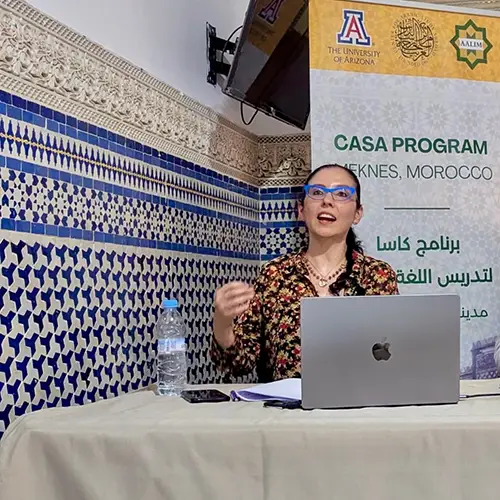


The Conversation: ‘Video games teach students in this class how religion works in the modern world’

Uncommon Courses is an occasional series from The Conversation U.S. highlighting unconventional approaches to teaching.
Title of the course
Religion and Gameworlds
What prompted the idea for the course?
Most of my research is in Chinese religions, and I find it fascinating that popular video games – like many popular films before them – draw from the mythologies, cosmologies, unseen powers and heroic narratives found across the world’s religious traditions.
Recent examples such as “Black Myth: Wukong” and “Raji: an Ancient Epic” draw explicitly from mythologies and religious narratives of China and India, respectively, putting the player in direct contest against pantheons of gods. Meanwhile, games such as “Sid Meier’s CIV VI,” where players develop an historical civilization from the Stone Age to Space Age in a quest for global domination, explicitly utilize religion as ways to develop and conquer the world.
At the same time, the interactive experience of a video game makes it an especially interesting place to study religion. When your character uses magic, interacts with powerful deities, or even achieves godlike status themselves, the player also shares such experiences on some level as well. Sometimes, viewers’ experiences blur the lines between “real life” and on-screen.
Some churches have even used the game “Second Life” to offer worshippers the option of getting baptized using their digital avatar in the game. This kind of practice raises poignant questions about how we understand religion in our modern world.

What does the course explore?
What makes this course different from many others that utilize video games is that the student experience of playing the games influences how we frame our investigation of religion. Students wrestle with questions about how religion helps build the worlds they are experiencing.
We meet in the game lab as a class once a week to observe and analyze each other’s experiences playing different kinds of games.
We start the week with relevant theoretical and historical framing in the traditional classroom. For example, in our investigation of “Black Myth: Wukong,” a game inspired by the 16th-century novel “Journey to the West,” students first read selections from the work as they learn about its protagonist, the trickster monkey god Sun Wukong.
In the novel, Wukong picks fights with all the gods in an attempt to overthrow the cosmic order, only to eventually be violently put in his place by the highest gods of the Chinese pantheon. Our class discussions thus serve as a general introduction to Chinese religions, while we also get to discuss the theoretical basis for culturally defined ideas such as what makes a hero.
Playing as a descendant of Sun Wukong, students explore enchanted landscapes, interact with local spirits and engage in magical combat against the very gods that we learned about in class.
Each week, students note their observations, carefully detailing their experience playing the game, as well as the experience of watching others do the same. Students are also asked to analyze the ways in which religious themes, narratives and practices played a role in the game world they experienced.
We conclude the class with weekly reflections on the overall experience.
What will the course prepare students to do?
In 2024, the video game industry boasted over US$184 billion generated in market value. The global reach of games allows new audiences to experience and learn about religious narratives and practices in new ways.
Popular media has long been a powerful mode of cultural exchange. Video games are just a recent example, but the scale to which gamers around the world connect with each other through playing demands more attention.
The wild popularity following the 2024 release of the game “Black Myth: Wukong,” the first premier produced game out of China for an international audience, suggests that this kind of experience is truly a global phenomenon that will only continue to grow. It only makes sense that video games can serve as powerful pedagogical tools as well.
The goal of the course is to prepare students to better understand the broader contexts in which their shared experience of enjoying video games derives. Learning about the role of religion in shaping that experience allows students to better understand how religion shapes our modern world.![]()
Michael Naparstek, Associate Teaching Professor Religious Studies, University of Tennessee
This article is republished from The Conversation under a Creative Commons license. Read the original article.

The Conversation: ‘Buddha’s foster mother played a key role in the orphaned prince’s life – and is a model for Buddhists on Mother’s Day’
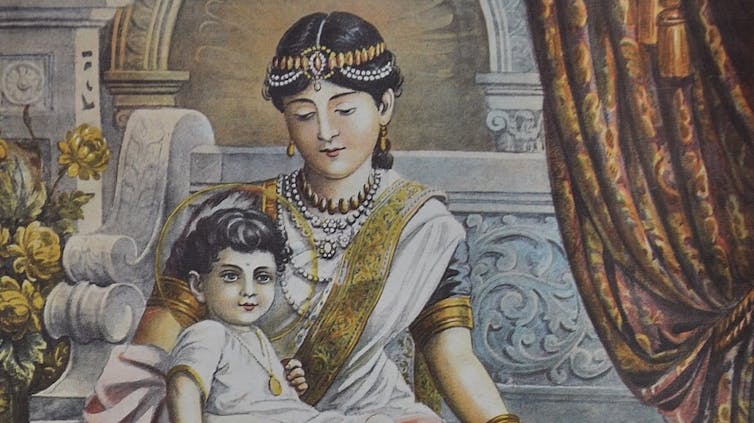
Mother’s Day offers an opportunity to reflect on what motherhood means in different religions and cultures. As a scholar of Buddhism and gender, I know how complicated Buddhist attitudes toward mothers can be.
The historical Buddha, Siddhartha Gautama, taught that family ties were obstacles to enlightenment. According to the Buddha, attachment to family causes suffering because family relationships eventually end and cannot offer lasting contentment. The main goal of Buddhism is to break the cycle of rebirth, which is characterized by suffering.
However, one family tie remained important for the Buddha – his relationship with his mother. Even after the Buddha left home, he continued to honor two mother figures – his biological mother, Maya, and his foster mother, known as Mahaprajapati Gautami in Sanskrit and Mahapajapati Gotami in the Pali language, which was used for early Buddhist scriptures in ancient India. These women played key roles in the Buddha’s life story, and they continue to inspire Buddhists today. Mahaprajapati specifically inspires women as the first Buddhist nun.
Many Buddhist scriptures describe reproduction and pregnancy in negative terms because they continue the cycle of rebirth. But Buddhist scriptures also express love and gratitude for mothers, especially the Buddha’s two mother figures.
Maya, the birth mother
Maya and Mahaprajapati were sisters who both married the Buddha’s father, Suddhodana, who ruled the region of Kapilavastu along the India-Nepal border. Maya’s name means “illusion,” which refers to a Hindu and Buddhist concept that the material world conceals the true nature of reality.
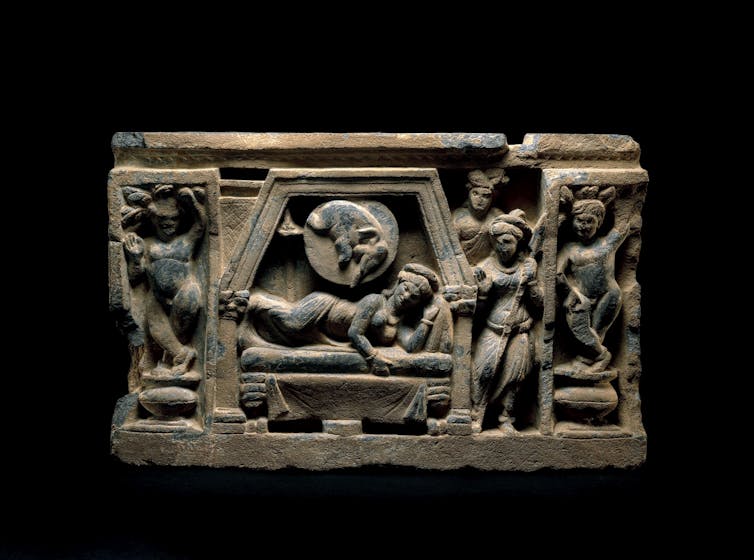
Miracles related to Maya appear throughout stories of the future Buddha Siddhartha’s conception, gestation and delivery. Siddhartha is the Buddha of the current world cycle, but in Buddhist tradition there were other Buddhas in the past and there will be more Buddhas in the future. Each one goes through many rebirths before they attain Buddhahood, and each Buddha’s final rebirth follows the same pattern. According to Buddhist texts, Buddhas-to-be wait for the right time to be born, they choose their own parents, and they are not conceived through sexual intercourse.
Early Buddhist texts claim that Siddhartha chose Maya as his mother because of her purity and entered her right side in the form of an elephant while she was sleeping. According to some Buddhist scriptures, during Maya’s pregnancy the future Buddha never actually touched her womb, which was considered impure in early Indian Buddhism. When Siddhartha was born, he is said to have emerged from Maya’s right side as she stood, holding onto a tree branch.
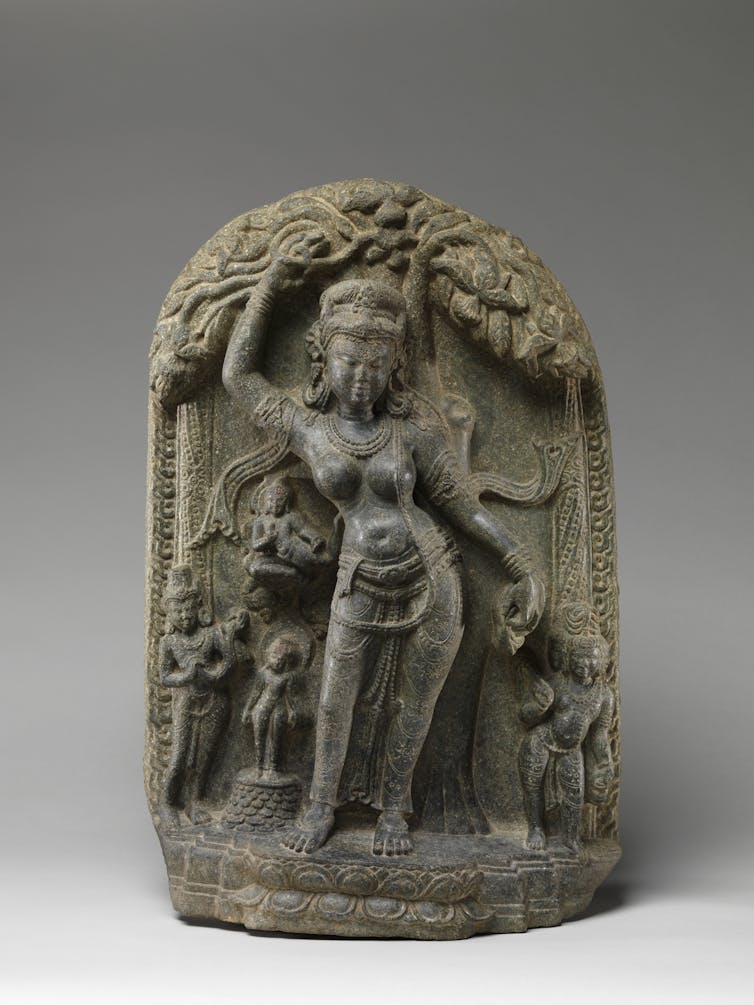
Maya died seven days after her son’s birth, meaning that she did not live to see him become an enlightened Buddha. As the Buddha, even though Siddhartha encouraged his followers to leave domestic life and cut family ties, he never forgot his birth mother.
Thanks to her good karma, Maya had been reborn in the heavens as a god, but in Buddhism gods are not as spiritually advanced as Buddhas. The Buddha used his spiritual powers to travel to the heavens, where he preached to Maya and encouraged her progress on the Buddhist path.
One Chinese text claims that Maya spontaneously lactated upon hearing her son’s words, showing that the bond between mother and son remained strong even after her death.
Mahaprajapati, the foster mother
Siddhartha’s aunt Mahaprajapati became his foster mother after Maya died. She cared for the young Siddhartha and breastfed him, having just given birth to her own biological son, Nanda.
When Siddhartha was preparing to leave home to follow a spiritual path, the chariot driver tried to convince him to stay by reminding Siddhartha how Mahaprajapati nursed him and telling Siddhartha he should be grateful for her motherly kindness.
Siddhartha left home anyway, which caused Mahaprajapati to collapse out of grief. According to the Mahavastu, the earliest Sanskrit biography of the Buddha, her “eyes, as a result of her tears and grief, had become covered as with scales, and she had become blind.” It was only after Siddhartha returned as the Buddha that her sight was restored.
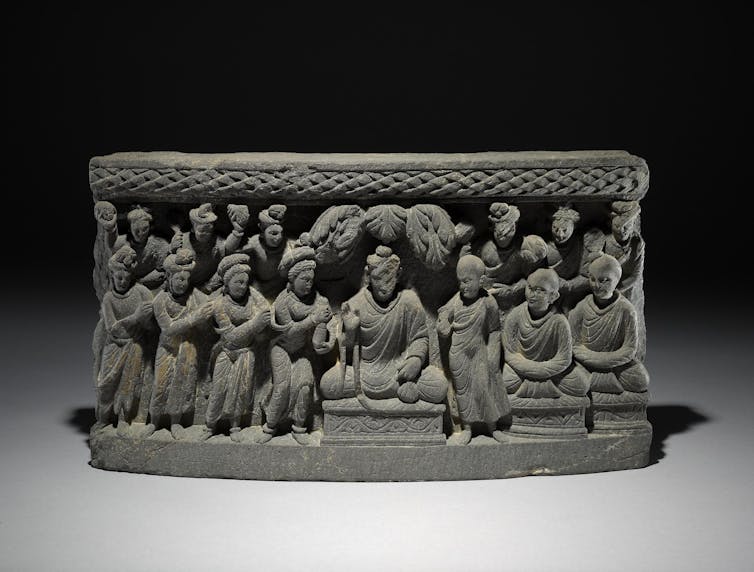
At around the same time as the Buddha’s return to his kingdom of Kapilavastu, his father Suddhodana died, making Mahaprajapati a widow. The books with rules for Buddhist monks and nuns, known as the Vinaya, report that Mahaprajapati approached the Buddha to ask whether women like her, as well as women whose husbands had become monks, could leave home to join the Buddha’s monastic order.
The Buddha eventually agreed to this request but warned that including women as nuns would cut short the lifespan of Buddhist teachings in the world from 1,000 years to 500 years. Mahaprajapati became the first Buddhist nun, reaching enlightenment before passing away at the age of 120.
Scholars of Buddhism do not necessarily treat this episode as literally true, but instead see it as a reflection of mixed attitudes toward admitting women as nuns in the early Buddhist community. These mixed attitudes can still be seen today – for example, in the unwillingness to reinstate the order of nuns in Southeast Asia, which died out centuries ago.
In Buddhism, nuns must be ordained by a group of 10 fully ordained monks and fully ordained nuns. An order of nuns still survives in China, Japan, Korea and Vietnam, where Mahayana Buddhism is practiced. However, the monastic leaders in Southeast Asia, where Theravada Buddhism is practiced, decided that Mahayana nuns could not ordain Theravada nuns, leaving countries such as Thailand, Laos, Cambodia and Myanmar without fully ordained nuns.
Legacies of the Buddha’s mothers
Both Maya and Mahaprajapati were loving mothers in the Buddha’s life story, but it is Mahaprajapati who has remained more of an inspiration for Buddhist women.
Reiko Ohnuma, a scholar of South Asian Buddhism, argues that Maya is remembered in Buddhist tradition as an idealized, if passive, maternal figure. Her death shortly after the future Buddha’s birth serves as a reminder that life is impermanent and characterized by suffering.
In contrast, Mahaprajapati lived a full life and played an active role in both raising the future Buddha and in advocating for women to join the monastic community. Early Buddhists may not have fully supported the inclusion of women in the Buddhist monastic community, but the nuns’ order was established nonetheless.
Mahaprajapati made this opportunity possible thanks to her unique position as the Buddha’s foster mother.![]()
Megan Bryson, Associate Professor of Religious Studies, University of Tennessee
This article is republished from The Conversation under a Creative Commons license. Read the original article.
From Nonprofit Leadership to Healthcare

Landyn Ford graduated with a BA in religious studies and a concentration in nonprofit leadership in 2023.
During his time at UT, he participated in numerous programs at the Howard H. Baker Center for Public Policy and conducted an undergraduate thesis study on healthcare sharing ministries under the supervision of Assistant Professor Manuela Ceballos.
Ford currently serves as the volunteer programs manager at East Tennessee Children’s Hospital (ETCH) while completing a master’s degree in healthcare administration through the University of North Carolina (UNC) at Chapel Hill.
In his role at ETCH, Ford oversees various programs, including the VolunTeen Program for high school students, which provides volunteer opportunities and attracts nearly 120 students each summer from across East Tennessee. He has developed two new programs for ETCH: the Children’s Hospital Immersive Medical Program (CHIMP) and a Career and Technical Education (CTE) Day. These educational initiatives are designed for students interested in healthcare careers and nonprofit organizations. CHIMP, for example, offers teens who have served at least one summer in the VolunTeen Program a weeklong opportunity to participate in interactive and hands-on experiences, problem-based learning sessions, and healthcare professional forums.
On top of these leadership roles, he assists the adult volunteer program, managing approximately 200 active volunteers, overseeing onboarding, training, and data management.
Ford credits his undergraduate work in religious studies for preparing him for graduate school and his work in the healthcare field, noting the student programs, professors, and classes. “UT prepared me to be a productive student, lifelong learner, and committed member of my community, workplace, and society,” he said.
The future looks bright for Ford. After he finishes his master’s degree, he plans to pursue further graduate work in bioethics and continue to build a career in the healthcare industry.
We are proud to have Landyn as an alumnus!
Robinson Recognized Religious Studies as Vital

Sherill Pace Robinson had just recently begun serving as chair of the Department of Religious Studies Board of Visitors when he passed away in November 2024. However, he was a longtime supporter of organizations in the Knoxville community, including the department, and had shared the following comments.
For Pace Robinson, supporting the Department of Religious Studies was part of a family legacy.
“My parents were very involved in all things Jewish in Knoxville and were integral in the establishment of the chair of Judaic studies,” he explained. “This ingrained in me a sense of responsibility in maintaining religious education for the students at the University of Tennessee.”
His parents, however, insisted that he and his siblings attend college away from their Knoxville home. So his wife, Karen Robinson (’81), is the only family member to have graduated from Rocky Top. She serves on the UT Alumni Board of Directors.
“I have been a big fan of the university—athletics and academics—my whole life,” he said. After earning a degree in finance, he returned to Knoxville and joined the family business, wholesale distributor Modern Supply Co. Robinson spent his entire career with the company and served as CEO for 25 years before retiring in 2017.
He also served as a volunteer and leader in numerous organizations, including the Knoxville Jewish Federation, Knoxville Jewish Alliance, Heska Amuna Synagogue, Knoxville Jewish Community Family of Funds, Webb School of Knoxville, Knoxville Utilities Board, and Sertoma.
Together he and his wife established the Karen and Pace Robinson Endowment in Judaic Studies.
“Karen and I feel a moral obligation towards philanthropy,” Pace Robinson said. “We saw the need to help supplement a small but important part of the university’s education system. This fund also helped me to honor my parent’s efforts with religious studies. “
As a part of the department’s Board of Visitors, he also learned more about the university, how it works and how it benefits students.
“Religious studies is a small but vital part of UT,” he said. “The trend toward de-emphasizing the humanities is concerning and makes the significance of religious studies all the more important these days. The faculty and staff do a great job of managing with limited resources but need outside help to supplement their efforts and continue the vital work of the department.”
Shepardson Publishing New Research

After completing five years as head of the Department of Religious Studies, Professor Tina Shepardson spent her 2023-24 research leave completing several projects. Among the most exciting was her third monograph, A Memory of Violence: Syriac Christianity and the Radicalization of Religious Difference in Late Antiquity, which should appear by late summer 2025.
Shepardson also submitted several shorter research projects and saw the publication of others, including “Teach Your Children Well: Martyrs, Monks and Mothers in Severus of Antioch,” in New Trajectories in Syriac Studies; “Jews and Christians in Pagan Antiquity from the First through the Third Centuries,” co-authored with Paula Fredriksen in the Cambridge History of Ancient Christianity; “Christianity Emerges in the Era of Late Antiquity,” in Entangling Web: The Fractious Story of Christianity in Europe; “Embodied Readers: Teaching the New Testament in Rural Protestant America,” in Activism, Bible, and Research-Based Teaching: Practical Approaches for the Global Biblical Studies Classroom; and “Speaking of Jews: Late Antique Antioch’s Shifting Anti-Jewish Rhetoric,” in Antioch on the Orontes: History, Society, Ecology, and Visual Culture.
She also published an earlier book discussion and a public-facing essay on early Christians in Gaza. In addition, Shepardson presented new work at UT’s Late Antiquity Faculty Research Seminar and conferences in Santa Barbara, California; San Antonio, Texas; and Chicago.
In spring 2024, she was honored to receive a Best Historical Materials Award from an affiliate of the American Library Association for her 2022 co-edited volume Invitation to Syriac Christianity: An Anthology, and UT’s Dr. Gilya Schmidt Endowed Faculty Award in Judaic Studies. Despite being on leave she enjoyed facilitating discussions on religious diversity and inclusion at resident assistant training sessions, giving a public talk on the history of Gaza, and discussing her research with Princeton and Yale University graduate students.
She accepted invitations to be on the advisory boards of the Journal of Early Christian Studies and UT’s Department of Africana Studies.
Teaching, Research, and Outreach Thrive

Greetings!
This year has been exciting and impressive for the Department of Religious Studies. Chancellor Donde Plowman presented the Dr. Marva Rudolph Access and Engagement Unit Excellence Award to the department, and individual faculty have been recognized too. Associate Professor Megan Bryson was honored by the Faculty Senate with its Heart and Soul Award, and Associate Professor Erin Darby was named a 2024-25 Athletics Professor of Excellence.
I am excited to tell you about some of our teaching initiatives. Last year, in collaboration with UT’s Teaching and Learning Innovation, Darby and Associate Professor Rachelle Scott developed a specialized version of our Religious Studies 101 course that targets first-year students who struggle during their first semester of college, to mentor them and teach them critical skills. We also now offer online both the religious studies major and our concentration in religion and nonprofit leadership.
Our faculty have been engaged in some really interesting research. Last year, Assistant Professor Manuela Ceballos had a National Endowment for the Humanities fellowship, during which she completed her book manuscript Between Dung and Blood: Purity, Sainthood, and Power in the Early Modern Western Mediterranean. She also had two books come out last year, her translation of Abdelfattah Kilito’s La lengua de Adán y otros relatos (Medellín, Colombia: Editorial Sílaba, 2023), and a co-edited volume, Navigating Language in the Early Islamic World Multilingualism and Language Change in the First Centuries of Islam (Brepols, 2024).
This past summer four of our faculty—Ceballos, Darby, Assistant Professor Marcus Harvey, and Associate Professor Joseph Witt—received stipends to support research initiatives. Harvey is spending this academic year at the Denbo Center for Humanities and the Arts, completing his first book, “Life Is War”: African Epistemology and Black Religious Phenomenology. He is following in the footsteps of Assistant Professor Larry Perry, who held a Denbo Center fellowship last year.
We are excited that we will be adding a new faculty member next year who will help lead our religion and nonprofit leadership program.
This fall, we hosted our very well-attended annual Siddiqi Lecture on Muslims in the US and a panel on the 100th anniversary of the Scopes Trial, which featured our own faculty experts talking about the intersections between religion and science. In the spring we hosted the Abraham and Rebecca Solomon and Ida Schwartz Distinguished Lecture on Judaic Studies, featuring Kerry Wallach, and our Distinguished Lecture in Religious Studies was given by Harvard University Professor Tracey Hucks. In March we hosted Rachel Havelock, giving the Karen and Pace Robinson Lecture on Judaic Studies, followed in April by the Anjali annual lecture, a talk titled, “Searching for Sarasvati: Race, Gender, and the Social Lives of Sanskrit in America.”
I hope we will see you soon at one of our events, in person or over Zoom.
On a personal note, I had a very good summer doing research at the Holocaust Museum and doing some preliminary research in Rwanda looking at Rwandan genocide memorials.
Sincerely,
Helene Sinnreich
Professor and Department Head

Religious Studies Honors Alumnus Educator

The Department of Religious Studies has named High School Director Sean Blevins from Annoor Academy of Knoxville the 2025 recipient of its Charles H. Reynolds Distinguished Alumnus Award.
“He demonstrates one of many ways in which our students go on to become important leaders in their community,” said Tina Shepardson, a distinguished professor in the humanities and head of the award selection committee.
“He has dedicated most of his adult life to cultivating his skills as a teacher in different contexts in order to best serve a really broad constituency of students,” said Assistant Professor Manuela Ceballas, who also served on the committee.
Blevins (BA ’98, MA ’03) builds education experiences for students around the same types of learning that were meaningful to him. “The religious studies department has been very formative to me,” he said.
He intended to major in music at the University of Tennessee, Knoxville, but realized during his freshman year that his interests were much broader. “I wound up taking two or three religious studies classes, an English class, an astronomy class, and anthropology and really, really loved my religious studies classes,” he said. “I was interested in why people are the way they are. I thought the most interesting answers were somehow tied up with what they believe.”
Blevins settled on a major in religious studies with a minor in English. He was particularly interested in Buddhism, and with encouragement from religious studies Professor Miriam Levering applied to a study abroad program in Bodh Gaya, India. “I lived in a Theravada Buddhist monastery and was able to study there for a semester,” he said. “That was an outstanding experience the first semester of my senior year.”
Career Start
The next semester he began volunteering at Ijams Nature Center a few days a week. Leading elementary school groups on field trips, walking in the woods with children and talking about what they found, was a rewarding experience for Blevins.
After graduation he worked in environmental education at Ijams through the AmeriCorps national service program. “I spent the next two years in some low-income schools around Knox County building gardens and nature trails, doing waste audits, and starting recycling programs,” Blevins said. “It wasn’t directly connected to my religious studies work, except that I was trying to find a way to live a life that felt meaningful.”
Blevins returned to UT in 2001 to earn a master’s degree in religious studies with a plan to concentrate on the New Testament. “And then September 11th happened, and everything was about Islam,” Blevins said.
“I was taking a class on Islam with (Professor) Rosalind Hackett and was very aware of the discourse that was happening around Islam, the way people were talking about Islam,” he said. “The lived experience of Muslims in America and around the world at that time suddenly became hyper relevant, and so I shifted my focus to Islam.”
The summer after his first year of graduate school, he traveled to Amman, Jordan, studying Arabic and meeting with scholars of Islam. He developed a deep respect for Islam and became Muslim.
Meeting High Standards

As a graduate student, Blevins also served as a teaching assistant (TA) in the Department of Religious Studies. “One of the biggest honors I’ve had in my life was when (Professor) James Fitzgerald asked me to be his TA,” Blevins said.
“As an undergraduate, he was the first professor—the first teacher—I ever had in my life to give me something other than an A on a paper,” he recalled. “It rocked my world.”
Blevins went to see the professor during his office hours and ask what needed to be better. “I remember what he recommended to me, and that was a very, very eye-opening transformation, meeting somebody who was going to push me to meet new, higher standards. So, when I came back, to have him invite me to be his TA was tremendous.”
After completing the master’s program, Blevins became a lecturer in the department, teaching the history of world religions and a thematic comparison of world religions for five years. He noticed, however, that some incoming students struggled with reading texts and articulating their own arguments in writing, and he decided to become a high school English teacher. Blevins earned his third degree from UT, an MS in English education, in 2009. Later he earned an educational specialist degree.
Blevins taught for two years at Knoxville’s Austin East High School before traveling with his family to Jordan for two years. There he studied Arabic and Islam, and he taught English as a second language. His wife, an attorney, had a Fulbright award to study human trafficking.
Over the following eight years Blevins taught at L&N STEM Academy, where he was recognized as a Teacher of the Year by students (2015) and faculty (2017). The school’s English department was so successful that he and his colleagues presented their work at conferences for the National Science Teaching Association and the National Council of Teachers of English.
Rich Classroom Experiences
“I found myself trying to recreate in the classroom what some of my richest classroom learning experiences had been,” he said, “reading something interesting and then talking about it, pulling the ideas out and weighing those ideas.”
In 2021 the private Islamic school Annoor Academy hired Blevins to develop its high school program. The first seniors will graduate in spring 2026.
“I intentionally have gone about trying to build what I think of as a reasonable approximation of a liberal arts academy,” he said. “Students are required to take a number of classes that are really explicitly designed to help them understand the world that we live in and why the world is the way it is, and why people behave the way they do, and then, when they go out into the world, how can they be meaningful agents of change in the world.”
Blevins recalls reading a 2023 column by David Brooks titled, “In the Age of A.I., Major in Being Human.” “Religious studies speaks directly to that,” Blevins said. “What does it mean to be a human being? How do human beings express their humanity? What are the consequences of believing in certain ways and behaving in certain ways, and what role do rituals and beliefs play in shaping us in our world and our environment and our shared communities?”
“Those are the things that I feel like really matter,” he said, “and those are things that I learned and got to explore for years in religious studies. I’m really grateful for that.”
By Amy Beth Miller
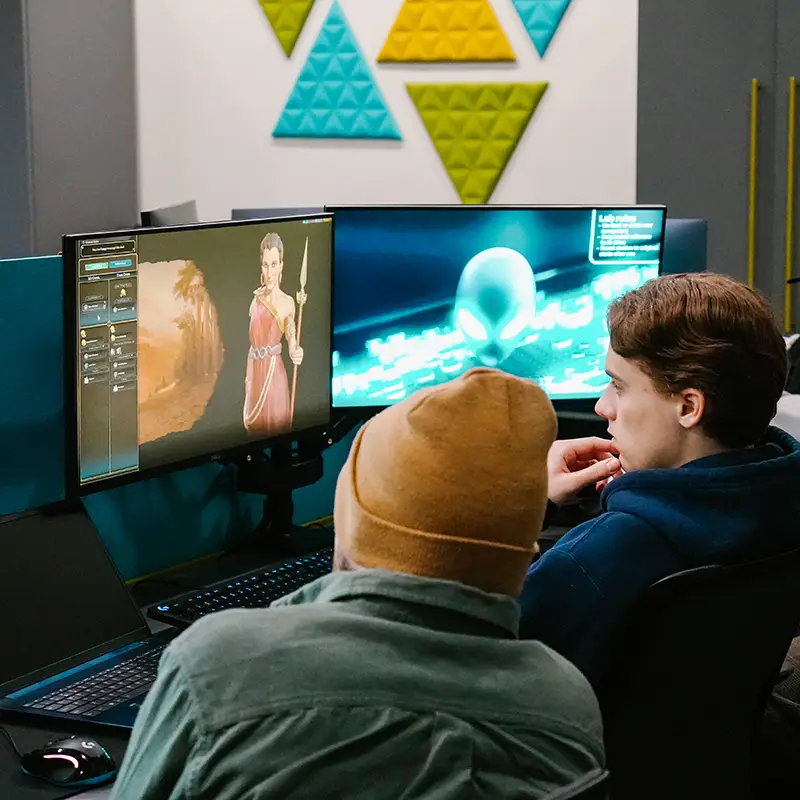
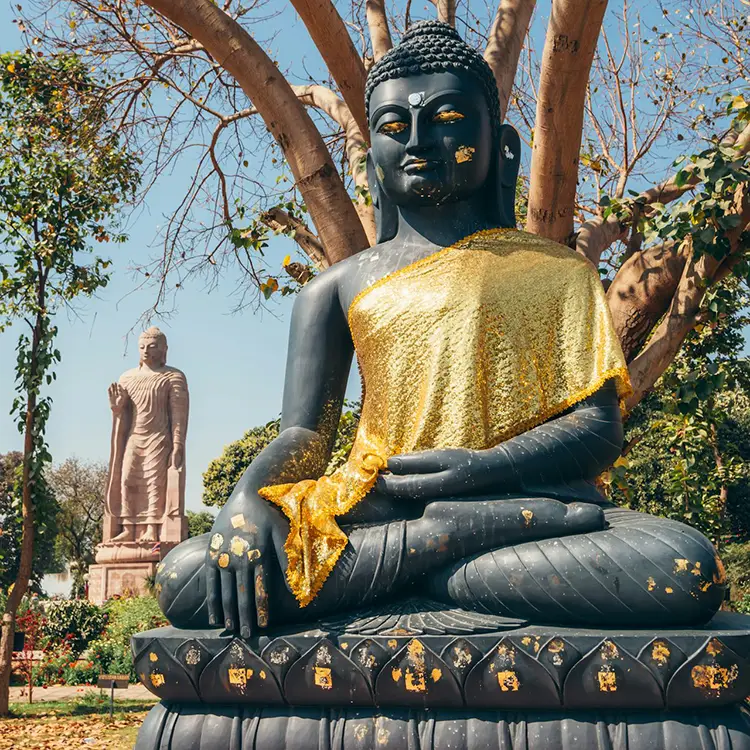
Megan Bryson in ‘The Conversation’: On Bodhi Day, Buddhists commemorate Siddhartha Gautama’s enlightenment by lighting lamps to combat darkness

Dec. 8 marks the celebration of Bodhi Day in Japanese Buddhism. Bodhi means enlightenment or awakening in Sanskrit. It commemorates the enlightenment of Siddhartha Gautama, who became the Buddha.
Buddhists throughout the world celebrate Bodhi Day, but they do not all celebrate Siddhartha’s enlightenment on Dec. 8. In China, South Korea and Vietnam, his enlightenment is observed on the eighth day of the 12th lunar month. In 2025, this falls on Jan. 7.
In the Theravada form of Buddhism followed in Southeast Asia, Gautama’s enlightenment is commemorated along with his birth and death during the Vesak festival celebrated in April or May. This is similar to Tibetan Buddhism, which also combines the observation of the Buddha’s birth, enlightenment and death in the springtime Saka Dawa festival.
As a scholar of Buddhism in East Asia, I study how people adapt Buddhism to their own cultural contexts. Bodhi Day is a good example of how Buddhists in different parts of Asia developed their own versions of important Buddhist holidays.
The story of Bodhi Day
No matter when Buddhists celebrate the Buddha’s enlightenment, the story behind the holiday is consistent. Biographies of the Buddha describe how young Prince Siddhartha became disillusioned with the fleeting luxuries of palace life.
He eventually left home to find a cure for the inevitable suffering caused by old age, sickness and death. Siddhartha sought guidance from various religious masters, including one who taught his students to practice extreme self-denial, such as eating only a spoonful of gruel per day.
Following this method, Siddhartha wasted away until he was just skin and bones, but he got no closer to resolving the problem of suffering. It was at just this time that a young woman named Sujata came by with milk porridge, which she offered to the skeletal Siddhartha.
This meal gave Siddhartha the energy he needed to resolve the problem of suffering once and for all. He realized that no external teacher could give him the answers he sought, and he would have to solve this problem on his own.
Siddhartha decided to meditate under a pipal tree, also known as a sacred fig tree, until he reached enlightenment. Over the next seven days he meditated, deepening his insights into the true nature of existence. On the seventh day, Siddhartha attained complete awakening to become a buddha. Buddhas are people who reach full enlightenment on their own, like Siddhartha, without direct guidance from a teacher.
Monks and nuns in Japanese and Korean Zen Buddhism follow this model by meditating intensively for the seven days leading up to Bodhi Day.
As a buddha, Siddhartha began sharing his insights with other spiritual seekers, attracting a group of followers who were the first Buddhists. Buddhist monks and merchants spread the religion to the north, east and south, and by the fourth century C.E. it was well established in China.
The Laba Festival and congee
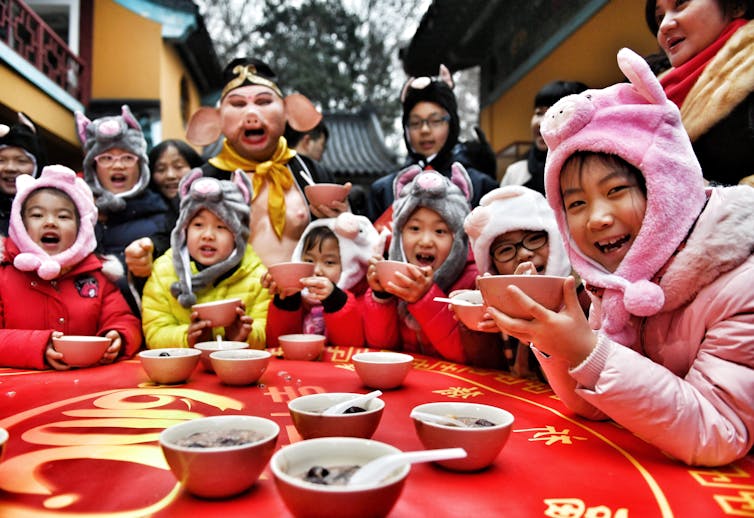
China already had its own religious and philosophical systems, along with its own calendar of holidays, when Buddhism came onto the scene. Buddhists in China adapted their religion to Chinese language and culture, including some existing holidays.
The 12th and final month of the Chinese lunar calendar was already a time for making sacrifices for ancestors in advance of the new year. In fact, the 12th month is called La, which originally referred to the cured meat that people offered to their ancestors at this time of year. “Ba” means the number eight, so Laba translates to “the eighth day of the La month” or “eighth day of the 12th month.”
Buddhism entered China in the first century C.E. By the third century, Chinese Buddhists identified the eighth day of the 12th month as the date of the Buddha’s enlightenment. Celebrating the Buddha’s enlightenment – or Bodhi Day – at the same time as the Laba Festival required adaptation.
The Laba Festival involved meat offerings and hunting, both of which violate Buddhist rules against killing animals. Over time, a compromise emerged, and rice porridge, or congee, became this holiday’s signature food for Buddhists and non-Buddhists alike. Rice has been used in Chinese religious offerings since at least the eighth century B.C.E., and rice congee also recalls the offering of milk porridge that helped Siddhartha on his journey to Buddhahood.
Light in the darkness
Another aspect of the Laba Festival, or Bodhi Day, is that it falls around the winter solstice, the darkest part of the year.
Like other holidays at this time of year, Bodhi Day involves lighting lamps to combat the darkness. For East Asian Buddhists, these lamps symbolize the Buddha’s enlightenment, which lights the path for others to follow.
Bodhi Day is celebrated in Japan and throughout the Japanese diaspora on Dec. 8 because Japan switched from the lunar to solar calendar in 1873. Buddhists in other East Asian countries, such as China, Vietnam and South Korea, will observe Bodhi Day on Jan. 7, 2025.
East Asian Buddhists will celebrate the holiday in different ways – some by lighting lamps, some by eating congee, some others by meditating for a full week straight. But for all Buddhists, Bodhi Day represents hope and the potential to overcome suffering.![]()
Megan Bryson, Associate Professor of Religious Studies, University of Tennessee
This article is republished from The Conversation under a Creative Commons license. Read the original article.